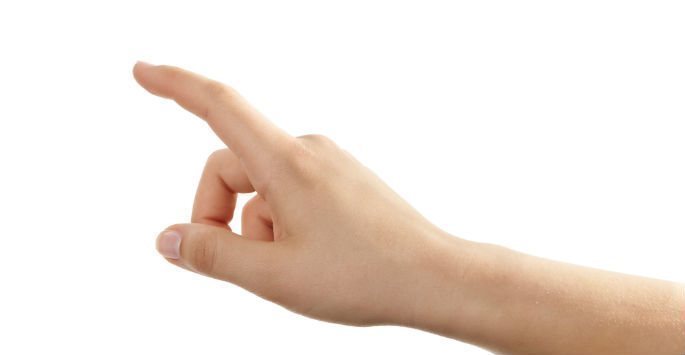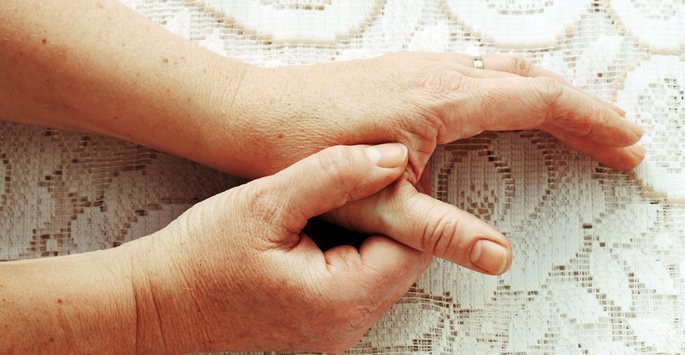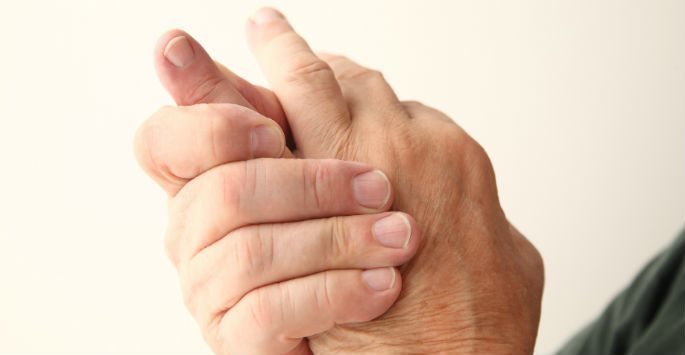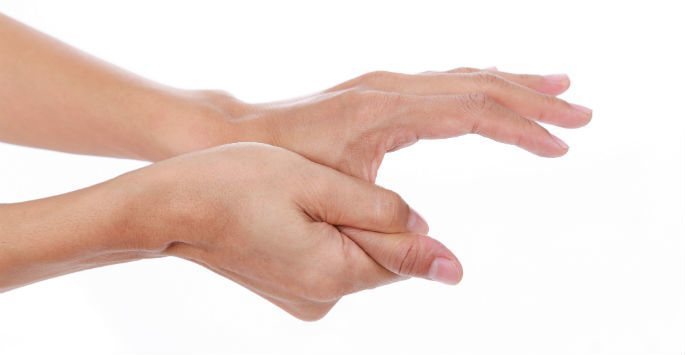Treatment Options for a Nail Bed Injury – Arora Hand Surgery

Your knuckles are an essential part of your hand. They are what give your fingers their dexterity and their ability to move. But as strong and vital your knuckles are, they can still be broken. As you can imagine, having a broken knuckle is not an enjoyable experience. It comes with several different symptoms, such as pain and swelling. A broken knuckle limits your finger’s mobility and prevents you from carrying out a lot of your daily activities.
Most people break their knuckles when they punch something, usually a hard surface. The symptoms associated with a broken knuckle are very similar to those associated with other injuries that you have in your hand.
For many people, the first sign of a broken knuckle is pain. The pain is instant, and it is severe. Contrary to what some believe, you might still be able to bend a broken knuckle. You might even be able to bend it without increasing the pain, but this does not mean that it is not broken. Depending on the location of the break, pain might increase as you try to move the broken knuckle.
The next symptom you are going to experience is swelling. Most people say that their hand starts to swell around 10 minutes after they break their knuckle. As the swelling increases, your ability to move your hand drastically decreases. Interestingly, you may notice that other fingers also begin to swell, not simply the one that is broken.
The next indication is bruising. The level of bruising will depend on the severity of the break. In many cases, you will see bruising almost instantaneously. This is because there is a rapid loss of blood in the area around the knuckle, which shows up as a bruise.
You will probably notice that your hand goes numb as the swelling increases. This is your body’s natural response to the injury. At a certain point, the swelling in your hand may get so severe that the nerves in your fingers become compressed, and any sensation disappears.
There will be visual clues that you have broken your knuckle as well. For example, if you make a fist, you may not be able to see your knuckle because it broken. The lack of swelling and the pain may make you think that your knuckle is not broken, but if it is sunken in, this is a sure sign that it is.
One of the biggest problems after having a broken knuckle is stiffness. Your knuckle is a very complicated joint, and it might not heal entirely. There is also the possibility of an infection after breaking a bone.
We offer many different types of effective surgeries designed to treat a broken knuckle. If you feel you may have a broken knuckle, visit Arora Hand Surgery for an official examination. Dr. Arora will help you explore all of your treatment options and develop a plan tailored just for you. To get help healing a broken knuckle safely and effectively, call our office in West Bloomfield, Howell, Warren, or Macomb to schedule your consultation.

Trigger finger is a condition that causes the fingers, and sometimes the thumb, to have a tendency to lock in place when they are bent. It is sometimes accompanied by popping and cracking while attempting to bend or straighten the fingers. In addition, it can be very painful at times.
Running through the fingers, just like in other parts of the body, are tendons that serve the purpose of connecting muscle to bone. These tendons will slide through a sheath, which is tissue that covers the tendon. The sheath contains a lubricating membrane to help the tendon move more easily. Trigger finger can develop when these tendons become inflamed. When this happens, the tendons can become swollen. This makes it harder for the tendon to move through the sheath. When this goes on for a period of time, the sheath can develop scar tissue, the result of which is a narrowed opening for the tendon to slide through. The resulting difficulty can cause popping and cracking as the tendon is pulled through restricted space.
Trigger finger can be caused by one of several factors. Health conditions like gout, diabetes or rheumatoid arthritis can lead to its development. It can also be caused by repetitive motion, especially if the motion is accompanied by forceful gripping. Sometimes, it becomes so hard to straighten the fingers that the other hand must be used to help.
If you suspect that you might have trigger finger, our team can perform a diagnosis rather easily. Once trigger finger is diagnosed, treatment may be done by a variety of methods. Usually, we will start with more conservative measures and progress to more extensive treatments only if the conservative methods do not work.
Trigger finger treatment may involve the use of a splint, anti-inflammatory medications or steroid injections, among other things. Often times, a combination approach is taken. If these more conservative measures don’t get the job done, surgery may be the next step. Most people, however, will not need surgery, but this obviously depends on the situation. The recovery time and results depend on the severity of the condition.
If you suspect that you may be developing trigger finger, you should seek help from the team at Arora Hand Surgery sooner rather than later. This will improve your chances of having success with conservative treatments. Our offices are located in West Bloomfield, Howell, Warren, and Macomb. Contact us today to schedule a consultation!

Thumb sprains can be very painful. All you need to do is ask anyone who has experienced one, if you haven’t had one yourself. They commonly occur during sports activities. In fact, they are often referred to as “skiers thumb” because of a high occurrence of injuries while skiing. The combination of the way the hand is grasping the ski pole and the impact of the pole hitting the ground can easily jam the hand, causing a thumb strain. Sports like basketball create a high risk for these types of sprains as well. If the hand is turned in the wrong way while attempting to catch the ball, a strain can happen. Striking the thumb on the ground during a fall is another common cause of the injury.
A sprain is an injury to a ligament, which is what holds the bones together. In the case of a thumb sprain, the damage is usually to the ligaments that support the joint at the base of the thumb. It happens when an impact causes the thumb to move beyond its normal range of movement. It is usually a backward movement that causes the injury.
Symptoms of a thumb sprain include immediate pain at the time of the impact. This may be followed by things like swelling, and there may be some instability in the joint. It may be difficult to do activities that require gripping, like turning a door knob or holding a drinking glass.
Immediately after the injury, the thumb should be protected against further injury by taping it or using a support. Ice should be applied as soon as possible to help reduce swelling. These are immediate steps that are taken as basic first aid measures following the injury. In order to ensure that there is no permanent damage, and to make sure the best possible treatment is provided to promote healing, our experienced hand specialist at Arora Hand Surgery should be consulted.
One of the things that will be done when seeking treatment for a sprained thumb is the taking of X-rays. This will help to detect or rule out a fracture. If no fracture is present, our doctor will still continue to treat the thumb sprain.
Since your hands are necessary for just about everything you do, you will not want to take their care lightly when it comes to treating an injury. The hands, including the fingers and thumbs, consist of very complicated anatomy. For this reason, you deserve the best treatment you can get when you are trying to recover from an injury. The best way to receive this is to seek out a well-qualified hand specialist like Dr. Arora. It can make the difference in getting you back on the road to recovery.
Make an appointment at Arora Hand Surgery in Howell, West Bloomfield, Macomb, or Warren to learn more. Contact us today to schedule an initial consultation.

Ranging from minor cuts and small wounds to broken bones and nerve damage, hand and finger nerve injuries are a relatively common occurrence. When a nerve in the hand or fingers is injured, symptoms can include loss of strength, sensation and muscle control.
Four nerves, two on each side, support the movement and sensation of your fingers. These nerves can be bruised and stop working properly for a short period. With this type of injury, the nerves usually heal and fully recover over time with little or no lingering side effects. These finger nerve injuries may not require advanced treatment.
A severe injury can cause more complex nerve damage that will require medical intervention to correct. Nerve damage can result in pain and weakness. If left untreated, your hand or fingers may weaken to the point where they become non-functional. As a result, early diagnosis and careful treatment will enable a faster and more complete recovery.
When an injury to the hand or fingers shows the signs of nerve damage, an assessment will be made to show the extent of the harm. You will undergo diagnostic testing to evaluate the level and speed of nerve activity. The results will enable our medical professional to determine the level of damage and customize a proper treatment protocol.
Damaged nerves that cannot heal on their own usually require surgery to reconnect the ends. Surgically repaired nerves as well as those not requiring an operation will undergo rehabilitation that focuses on preventing further damage, promoting movement and sensory reeducation.
The injured area will be immobilized initially in a safe position to prevent further damage and allow the healing process to begin. Some movement may be allowed to keep the nerve from atrophying. Once the nerve is healed, you will undergo physical therapy to learn how to compensate for any residual loss of feeling or muscle control. This therapy will enable you to use your hand and fingers in a more normal manner while learning how to avoid future complications.
Severe nerve damage will require extensive therapy to reeducate a patient in this circumstance on how to compensate for the loss of sensation in the affected area. The brain will have to be reprogrammed to process the new signals and produce the required level of dexterity.
If you have suffered a hand or finger injury, schedule a consultation at Arora Hand Surgery for a full examination to determine the extent of the damage. The results of the evaluation will enable us to determine the best course of treatment to produce optimal results. The sooner that you address hand and finger nerve injuries, the quicker your quality of life will improve. We have offices in West Bloomfield, Howell, Warren, and Macomb Township. Contact us today to book an appointment to learn more.

We use our fingers all of the time all throughout the day. As a result, they are always at risk of fingertip injuries, and there are many of them.
Your fingertips are packed with nerve endings, more than almost anywhere else in the body. That’s because you need all of those nerves to fine-tune your ability to feel and use your fingers. Of course, with all of those nerve endings hanging out in your fingertips, an injury to this area can be very painful.
Fingertips can be damaged in a number of different ways, ranging from very minor to extremely serious. Because the fingertip skin is so unique, if it becomes destroyed, it usually cannot be replaced.
Some common examples of fingertip injuries include:
- Crushing damage if the finger is closed in a door, hit with a hammer, or has something heavy dropped on it
- Cuts from knives, power tools, etc.
- Bent and broken from being caught in equipment, ropes, or nets.
If you have a fingertip injury, the first thing your doctor will do is examine the area, check for mobility in the finger and then get X-rays. It will need to be determined if any of the bones in the finger have been broken.
Treatment of Fingertip Injuries
How the injury will be treated depends solely on the type of injury itself. Here are some examples:
- Severe crush injuries may mean that some tissue needs to be removed or the whole finger has to be removed.
- If bone has been exposed, then skin grafts may be used to cover the injury.
- If soft tissue has been lost, then this may be replaced along with skin grafts to cover the area.
- At times, a flap of skin is lifted from the adjacent finger and used to cover the injury and provide blood flow while the finger heals. Once the wound is healing, the flap can be stitched back down to its original finger site.
- If the finger has been fractured, then a splint will be used to stabilize the area.
- If the fracture is severe, then pins may be placed within the finger bone to help it set in the proper manner.
If damage to the fingertip is extremely severe, then likely, amputation will be needed. That’s because it is very hard to replace tissues in the finger when most of the existing tissue has been destroyed.
Injuries to the fingertip can mean loss of sensation for a long time. In fact, some people report it taking several months to get full feeling back in the finger. Scarring to the nailbed may mean the fingernail grows back deformed or does not grow back at all.
Every day, your fingers are exposed to injury. So, it should come as no surprise that fingertip injuries are common. Depending on the type of injury or trauma, there could be ways to treat the situation and return the finger to normal function, but in severe cases, the finger may be lost altogether.
For more information, contact Arora Hand Surgery today.

Nails are made of a tough protein called keratin that is also found in hair and skin. The phrase “nail plate” is the technical term for what most people call the nail. The nail bed is the skin immediately under the nail plate, and it is comprised of two tissue types: an epidermis and a dermis. The matrix is the part of the nail bed that produces more nail plate cells. The lunula or crescent, which can sometimes be seen at the base of the nail, is the visible part of the matrix. When injuries occur in or near the nail bed, nail bed repair is typically used to correct the situation.
What Causes an Injury to the Nail Bed?
Injuries to the nail bed are usually caused by injuries to the finger or toe. For example, a broken toe or finger may be accompanied by damage to the nail bed. The nail bed can also be damaged by cuts or lacerations. Pinching or crushing injuries, like that caused by getting a finger caught in a door, can cause injury to the nail bed.
What Does Nail Bed Repair Involve?
Our doctor will first want a description of how the injury occurred. He will also probably X-ray the patient in order to check for broken bones. The treatment will depend on the type of injury and its severity. The patient will probably be given a local anesthetic before nail bed repair is performed.
What is a Subungual Hematoma?
A subungual hematoma is bleeding under the nail. It is usually caused by a crushing injury like hitting one’s thumb with a hammer or dropping a heavy object on one’s toe. The patient’s blood collects under the nail and causes intense, throbbing pain and discoloration of the nail.
During a consultation, our doctor will check for broken bones and other serious injuries. If he doesn’t find any, he will likely decompress the hematoma to relieve the pressure caused by the accumulation of blood. After numbing the treatment site, either a needle, heated wire (electrocautery device) or carbon laser may be used to perforate the nail and let the blood drain.
In a complicated subungual hematoma, the blood has accumulated under the whole nail and caused it to separate from the nail bed. In these cases, our doctor may have to remove the nail. However, it all depends on the unique situation.
What is a Nail Bed Laceration?
A nail bed laceration is a cut involving both the nail and the nail bed beneath it. Our doctor may remove the damaged part of the nail and then stitch the wound to the nail bed. He may replace the damaged nail to have it serve as a splint. Over time, a healthy, new nail will grow in to replace it.
Learn More About Nail Bed Repair
Injuries to the nail bed can be painful. Fortunately, nail bed repair can be used to fix the problem, leading to a better quality of life for the patient. You can learn more about the details of nail bed repair during a consultation at Arora Hand Surgery in Macomb Township, Warren, Howell, or West Bloomfield.

Trigger finger, more formally known as stenosing tenosynovitis, is a condition in which a finger or the thumb gets locked in a bent position. The condition is more common in women than in men.
What are the Symptoms?
The affected finger may suddenly snap straight, like a trigger being pulled and released. Alternatively, the patient may not be able to straighten their finger at all. The patient may also feel discomfort or a lump at the base of the finger. Other symptoms can include limited mobility of the affected digit, a clicking or popping noise when the finger does move and pain.
What Causes Trigger Finger?
The fingers and thumbs have tendons that pass through sheaths or pulleys that keep the tendon close to the finger bone. If the sheath gets inflamed or irritated, it swells and thickens, which prevents the tendon from moving normally. If the condition isn’t treated, the sheath develops scars and nodules that make the sheath even more abnormally thick. This impairs the finger’s mobility even more.
Trigger finger is more common in people with certain health problems, such as diabetes or rheumatoid arthritis. Occupations and activities that require repeated strong gripping can increase the chances of developing trigger finger. For example, anybody who uses a screwdriver a lot might develop trigger finger.
How is Trigger Finger Treated?
There are many possible treatments for trigger finger. In a lot of cases, Dr. Arora will start by simply recommending that the patient rest the affected hand for at least four weeks. He may also recommend anti-inflammatory medication.
Our doctor may also splint the patient’s finger to keep it straight. In some cases, the patient will wear the splint only at night to avoid curling their fingers into a fist while sleeping. The patient may wear the splint for up to six weeks. Dr. Arora may also recommend gentle stretching exercises to improve the finger’s mobility.
If none of these methods prove helpful, our doctor may recommend a steroid injection near or directly into the affected sheath to reduce swelling and let the finger move freely again. Steroid injections are the most common treatment for trigger finger, and they work for about 90 percent of non-diabetic patients. The injection works for about 50 percent of the patients with diabetes.
An outpatient procedure in which the doctor breaks apart the constriction is often necessary if non-surgical treatments have failed. In severe or stubborn cases, our doctor may perform surgery on the affected tendon sheath.
Learn More During a Consultation
There is no one-size-fits-all treatment for trigger finger, as the best treatment option will depend on the unique situation. Make an appointment at Arora Hand Surgery in West Bloomfield, Howell, Warren, or Macomb so that our team can assess your condition and come up with a treatment plan for relieving you of your symptoms. Contact us today to schedule a consultation.
When you hear the term “psoriasis,” you no doubt think about your skin or your scalp. You know about itching, flaking and discomfort in other areas, but probably the very last thing you think about is your fingernails. The fact is, though, psoriasis can also affect your nails. It changes the way that your nails look, often causing thickening or a change in shape or color, and it can also be painful. Fortunately, nail psoriasis is very treatable.
Symptoms
If you have nail psoriasis, your nails may become very unsightly, turning brown, yellow or green, or developing white or red spots. You may also notice grooves or ridges, or little holes on the surface of the nail. You might also find that there is a buildup of white, chalky material under the nail that could even cause it to become detached from the skin. Needless to say, this is painful. Brittle or broken nails are also a symptom of nail psoriasis. In its advanced stages, nail psoriasis may make it difficult for you to move your fingers. This loss of functionality can impair your ability to work and to socialize effectively.
Preventing Nail Psoriasis
As is the case with many illnesses and disorders, prevention is far better than a cure. In order to prevent nail psoriasis, you should do the following:
- Keep your nails short.
- Wear gloves when you are working with your hands.
- Use a nail file to make sure that your nails are always smooth.
- Moisturize your hands morning and evening, and whenever they have been in water.
- Use clear nail polish to protect the surface of your nails, but be sure that you are not allergic to any of the chemicals in the polish.
Remember that taking care of your nails is part of your daily hygiene, just the same as washing your face or brushing your teeth.
Treating Nail Psoriasis
Generally speaking, the same treatments that work on scalp and skin psoriasis can also work on nail psoriasis. However, because nails grow slowly, you may not see improvement right away. Treatments for nail psoriasis include:
- Medication that is either taken orally or applied directly to the nails
- Phototherapy using ultraviolet light
- Protective lacquers to strengthen and hydrate your nails – used in the same way as nail polish
- Antibiotic creams that work to ease the discomfort of nail psoriasis and cure any infection that may have resulted from the condition
- Coricosteroid injections applied under the nails every few months, under local anesthetic
The Final Word
Nail psoriasis is unsightly, and can also be very painful. Fortunately, there are remedies available that can ease the discomfort and correct the condition. If you have symptoms of nail psoriasis, you should see your doctor immediately. The condition will not get better on its own, and if left untreated, it can cause significant and permanent damage to your nail bed.
If you have any specific questions, please visit or contact our office in West Bloomfield, Howell, Warren, or Macomb.













